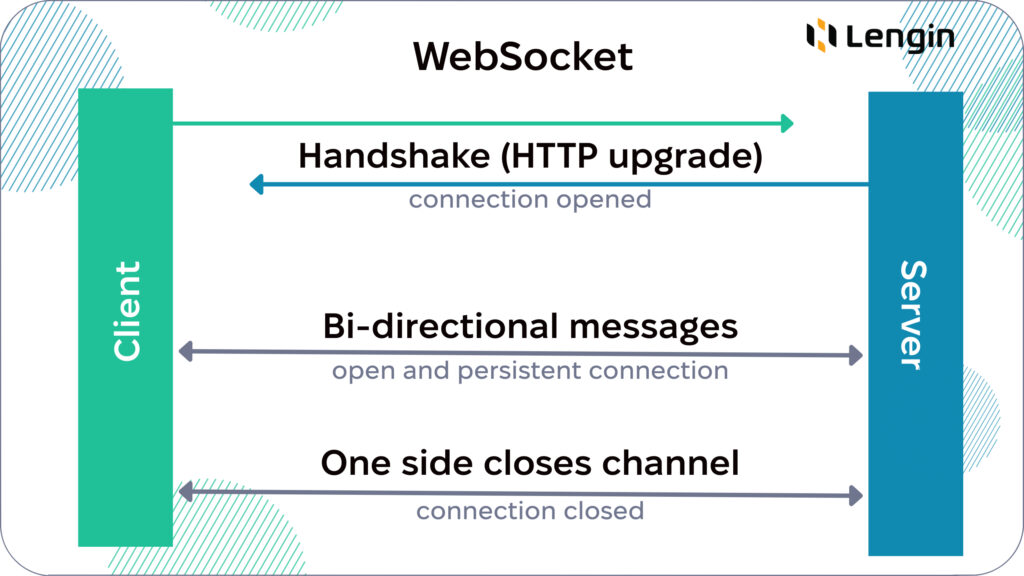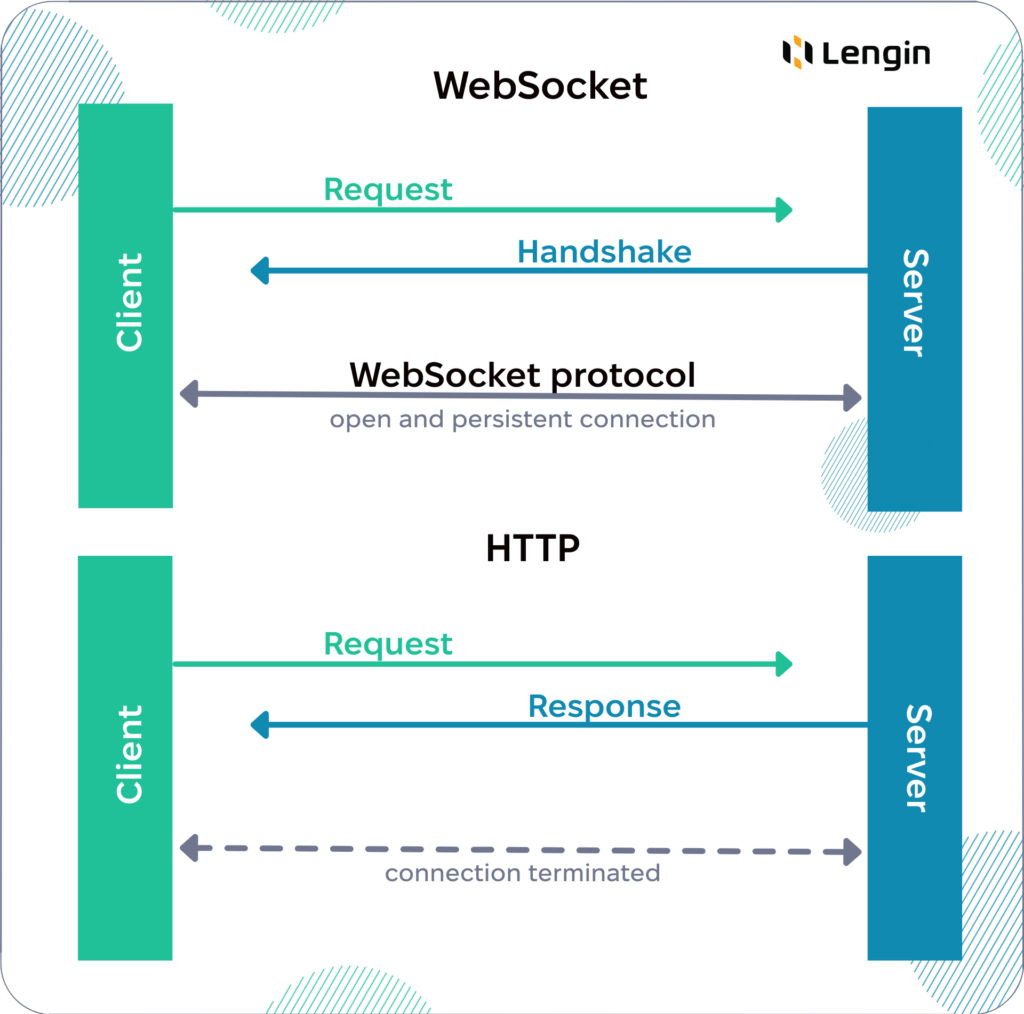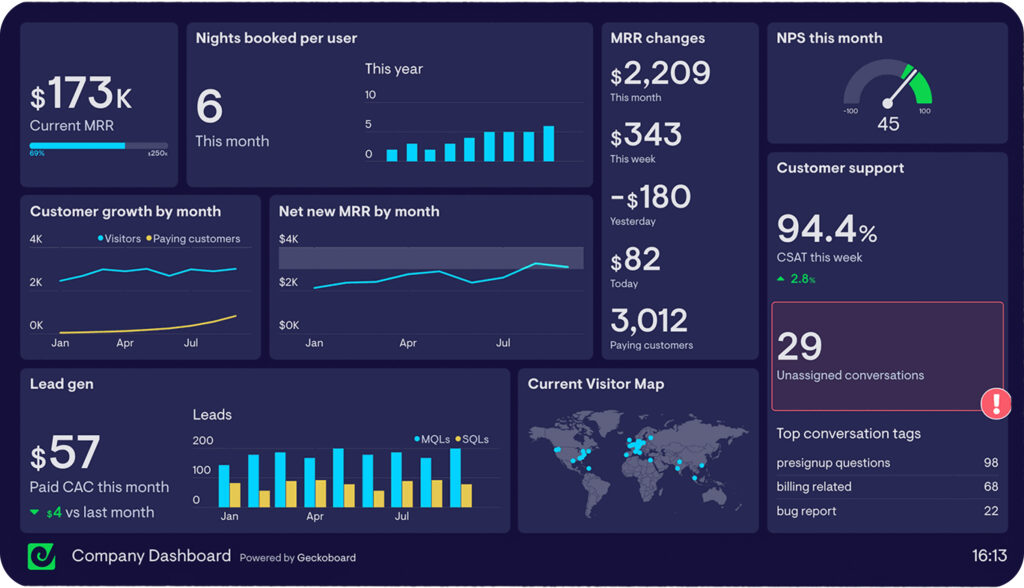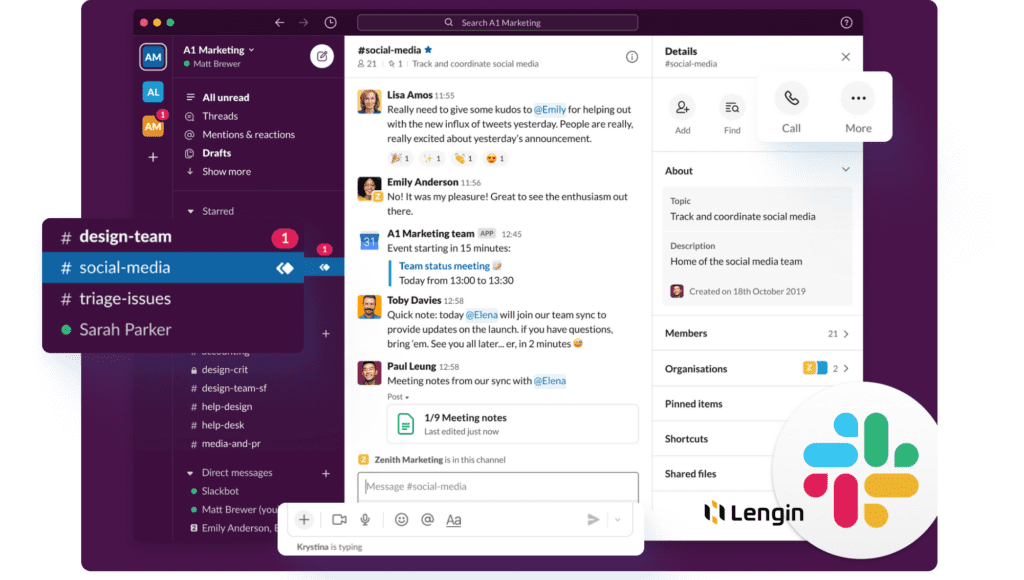Real-time web applications have become a must-have. Real-time applications require an immediate response to changes in the environment, user input, or other external factors. Many companies leverage instant updates and seamless data transmission as their key competitive advantage.
You may have wondered how I can build real-time features into my web or mobile apps without paying a fortune. The good news is that it’s now possible without massive engineering resources and time-consuming processes.
This is where Node.js combined with the Socket.io library and WebSockets shines. Let’s analyze this powerful combo one by one.
Table of Contents:
The Role of Node.js, WebSocket, and Socket.io
Node.js
Node.js is a JavaScript runtime with an event-driven, non-blocking I/O model built on Chrome’s V8 JS engine. Node.js plays a significant part in providing scalability and creating high-performance servers that can handle a large number of concurrent connections.
WebSocket
WebSocket is a protocol that enables bidirectional communication between the client and server over a single, long-lived connection. It allows for real-time communication, helping the server to push updates to connected clients as soon as they occur without the need for frequent polling.

WebSocket vs HTTP
WebSocket and HTTP are both protocols used for communication between a client and a server, but they have different purposes and characteristics.
HTTP is suitable for requesting and retrieving resources like HTML pages, images, and videos on static websites. Meanwhile, WebSocket is perfect for real-time applications such as chat applications, gaming, and live updates.
This is based on the different connection longevity of these two protocols. HTTP connections are typically short-lived, meaning that the connection is closed after the request-response cycle is complete.
In contrast, WebSocket connections are long-lived, meaning that the connection is kept open until the client or server closes it. It is more clearly depicted in the pictures below.

Finally, the biggest question: Are WebSockets faster than HTTP? The answer is “yes,” especially in the context of real-time applications that require recurrent data exchanges.
Socket.io
Socket.io is a JavaScript library that simplifies the process of working with WebSocket connections. It provides a socket object that can be used to emit and listen for events, making it easier to build real-time applications. Socket.io also offers additional features such as broadcasting, clustering, and compatibility with a variety of transport protocols.
Impact of Using
Together, Node.js offers a scalable, high-performance server-side environment, WebSocket enables persistent bidirectional communication for real-time updates and interaction, and Socket.io facilitates the process of working with WebSocket connections by providing a simple API for emitting and listening to events.
Some real-time features the combination of WebSocket and Socket.io can unlock for your product:
- Instant notifications.
Send push notifications the moment something happens; no more polling. - Live dashboards.
Stream real-time data and metrics for up-to-date visualization and tracking. - Multiplayer gaming.
Build engaging online games with real-time player interactions. - Chats.
Offer seamless messaging with quick delivery of messages. - Collaborative editing.
Allow multi-user simultaneous editing of documents or projects. - Location tracking.
Show real-time locations of people, assets, or shipments on a map.
Consequently, we can include a wide range of applications in the list of possible cases of usage of WebSockets and Socket.io.
What are Node.js, WebSockets, and Socket.io for?
- Chat Applications.
Apps like Slack, WhatsApp, and Telegram use WebSockets to enable real-time messaging between users.
- Multiplayer Gaming.
WebSockets allow real-time transmission of data like player moves, live score updates, etc. Popular multiplayer games like 8 Ball Pool and Agar.io leverage Socket.io and Node.js to handle gaming data.
- Live Data Dashboards.
Real-time dashboard apps like Geckoboard use WebSockets and Socket.io combo to push live data updates like sales and traffic metrics to the browser for instant visualization.

- Sports Updates.
Sports sites like the NBA and ESPN provide real-time score updates and commentary during matches using WebSockets and Socket.io connections instead of periodic polling.
- Stock Trading Apps.
Many stock trading platforms use WebSockets and Socket.io to stream live market data to their apps instantly. Quick data delivery is critical for trading decisions.
- IoT Applications.
Socket.io enables real-time monitoring and control of “Internet of Things” devices like home automation systems, wearables, etc. Data from sensors can be efficiently streamed over WebSockets.
- Location Tracking.
Ride-sharing and delivery apps show real-time tracking by pushing location data over WebSockets. Facilitating with Socket.io fits such use cases nicely, too.
Business Case: Slack
Slack is a popular team collaboration tool known for its real-time messaging capabilities. To enable instant messaging between users, Slack needs fast and persistent bidirectional communication between its servers and clients.
Slack’s backend is built on Node.js, which provides a fast and scalable platform for handling WebSocket connections. However, WebSockets are low-level and complex to work with directly. Socket.IO sits on top of the raw WebSocket protocol to handle connection management and any obstacles for smooth app operation. It abstracts away the tricky parts of WebSockets and gives Slack a straightforward real-time communication API to work with.

When a user opens up the Slack web or mobile app, the Socket.IO client establishes a WebSocket connection to the Slack server. This provides a low-latency, fully duplex communication channel. Using Socket.IO’s broadcasting capabilities, the Slack server can efficiently emit new messages or notifications to all connected clients in real time.
For example, when one user sends a message in a channel, Socket.IO allows the server to instantly push that update to all other users in that workspace. This creates a real-time chat experience compared to continually polling for updates.
The combination of Node.js, WebSockets, and Socket.IO gives Slack a massively scalable platform that can support millions of concurrent users chatting seamlessly in real time.
Segmenting users into channels and workplaces for targeted messaging is one of the core features of Slack and Socket.io enables it too.
Features like presence and typing indicators are also in the list of the all-the-time-changing features Node.js, WebSocket, and Socket.io combo provide.
While Node.js’ scalability handles Slack’s growing user base, WebSocket and Socket.io maintain real-life features updated. Real-time messaging delivers an engaging user experience critical for Slack’s collaboration capabilities as well as fast chat and notifications that keep users actively engaged with the platform.
Conclusion
Node.js, WebSockets, and Socket.io combination has enabled various real-time applications across industries. From collaborative office tools like Slack to online multiplayer games and live data dashboards, the ability to instantly transmit changes to connected users has become a vital competitive advantage. This stack is a powerful yet straightforward solution for building real-time features in web applications.
Just how fast can you get something up and running? We are ready to provide you with our Node.js experts literally tomorrow. Get in touch to explore how we can turn your product vision into reality.